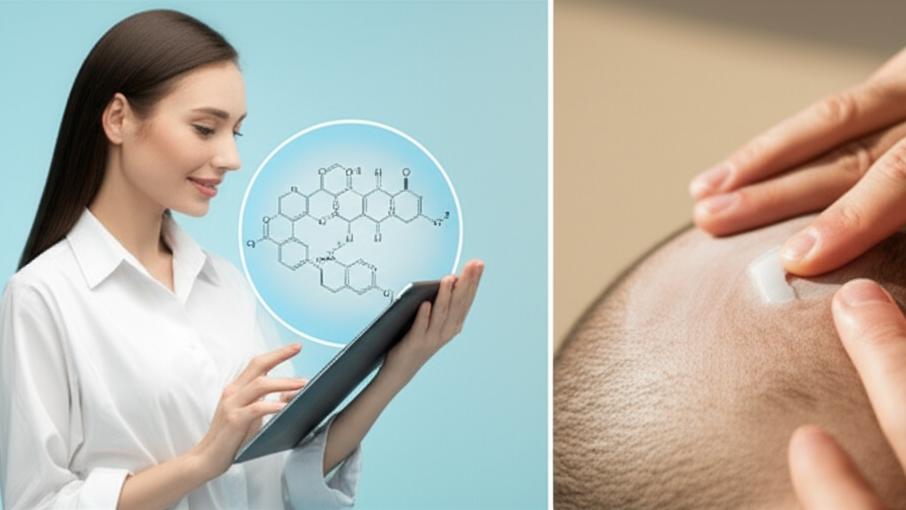So, dutasteride has captured your interest, and you’re likely here because you have questions – probably quite a few! You might be thinking, “Can I actually order dutasteride online, and is that a safe option?” Or perhaps you’ve heard the growing discussion around topical dutasteride and want to know if it’s a significant step forward for hair loss treatments. If you’re a woman, the use of dutasteride minoxidil women combinations might be something you’re looking into. And for men, understanding the potential dutasteride side effects in males is undoubtedly a major concern. Finally, how exactly does this medication achieve its effects? Let’s explore the dutasteride mechanism of action. There’s a good deal to cover, but we’ll navigate it step-by-step, aiming for a clear and informative discussion.
An Essential Note Before We Begin: While this article aims to provide comprehensive and understandable information, it is critically important to remember that this content is for educational purposes only and does not substitute for professional medical advice. Dutasteride is a potent prescription medication. Determining if it’s the right choice for you, and how it should be used, absolutely requires a thorough consultation with a qualified healthcare provider – someone who is familiar with your specific medical history and health status. They are your best and most reliable partner in making informed health decisions.
How Dutasteride Works: Understanding Its Mechanism of Action
Have you ever wondered about the cellular-level processes when someone takes dutasteride? Delving into the dutasteride mechanism of action might seem technical, but understanding it provides valuable insight into why it’s used for particular medical conditions and makes its effects more comprehensible.
DHT – The Hormone Dutasteride Targets
Your body produces an enzyme called 5-alpha-reductase, which converts testosterone into dihydrotestosterone (DHT), a more potent androgen. While DHT supports certain functions, elevated levels drive hair follicle miniaturization (pattern hair loss) and prostate enlargement (BPH). Dutasteride is a dual 5-alpha-reductase inhibitor, blocking both Type I (skin/scalp) and Type II (prostate) isoenzymes, reducing systemic DHT by over 90%. This dramatic drop underlies its therapeutic effects. For detailed pharmacology, see DrugBank.
FDA-Approved and Off-Label Uses
Approved for benign prostatic hyperplasia, dutasteride is also widely used off-label to treat male pattern hair loss, thanks to its potent DHT suppression.
Topical Dutasteride: Localized Hair Loss Therapy
Applying dutasteride directly to thinning areas offers a targeted approach. As a compounded cream or solution, topical dutasteride is massaged into the scalp to inhibit DHT at the follicle level while minimizing systemic exposure.
Potential Benefits and Research
Localized therapy aims to deliver high concentrations to hair follicles with reduced blood levels, potentially lowering the risk of systemic side effects. Early studies and case series suggest promising results, but larger trials are needed to confirm efficacy and safety.
Access via Compounding Pharmacies
Topical formulations aren’t commercially available; they’re prepared by compounding pharmacies, often blending dutasteride with agents like minoxidil. Concentrations and bases vary, so quality depends on the provider.
Dutasteride in Women: Exploring Combination Therapy
Female pattern hair loss (FPHL) can be hormonally driven, and some clinicians have trialed dutasteride minoxidil women combinations. Dutasteride addresses the DHT component, while minoxidil stimulates follicle growth.
Evidence and Safety Considerations
Use in women is off-label and contraindicated in pregnancy due to teratogenic risk. Limited studies show low-dose oral or topical dutasteride plus minoxidil may help refractory FPHL, but long-term safety data are lacking. Always consult a specialist before considering this option.
Side Effects in Men: What to Expect
Men evaluating dutasteride should understand potential dutasteride side effects in males:
- Reduced libido and erectile dysfunction
- Decreased ejaculate volume
- Possible mood changes or depressive symptoms
- Rare gynecomastia or breast tenderness
- Dizziness or headache in under 1% of users
Many side effects improve over time or upon discontinuation. Note: dutasteride lowers PSA levels, affecting prostate cancer screening—inform your physician to adjust interpretation.
Ordering Dutasteride Online: Tips for Safety
Though tempting, purchasing from unverified sites poses risks of counterfeit or substandard products. Follow these guidelines for safe dutasteride online ordering:
Choose Licensed Telehealth Services
Use platforms that connect you with board-certified physicians via video or questionnaire. After medical approval, prescriptions are filled by accredited pharmacies.
Verify Pharmacy Credentials
Confirm certification through the National Association of Boards of Pharmacy. Avoid sellers that dispense without prescription or offer prices far below market rates.
Key Takeaways
- Mechanism: Dual 5-AR inhibition dramatically reduces DHT.
- Topical Use: Promising targeted therapy, pending larger studies.
- Women’s Health: Off-label combination with minoxidil; avoid if pregnant.
- Side Effects: Sexual dysfunction, mood changes, PSA alteration.
- Online Ordering: Rely on licensed telehealth and NABP-certified pharmacies.
For more in-depth reading, consult the PubMed literature and patient guides at the Mayo Clinic.


